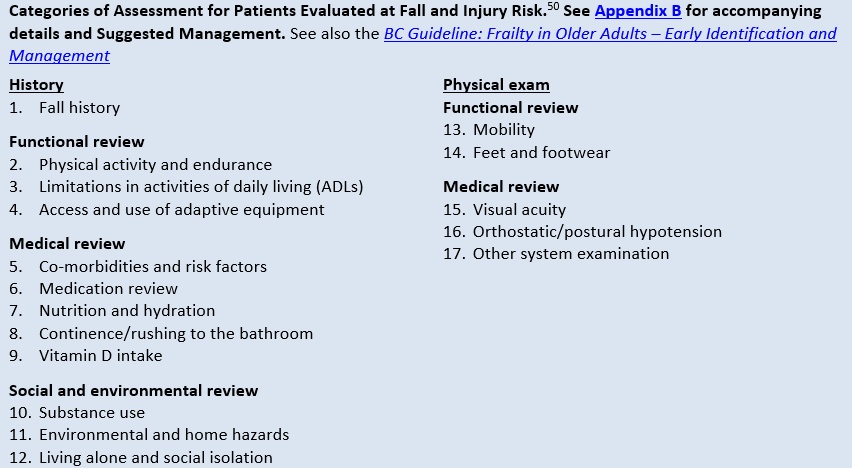Rumored Buzz on Dementia Fall Risk
The Best Strategy To Use For Dementia Fall Risk
Table of ContentsThe Single Strategy To Use For Dementia Fall RiskExamine This Report about Dementia Fall RiskSee This Report about Dementia Fall RiskNot known Incorrect Statements About Dementia Fall Risk Get This Report on Dementia Fall Risk
The FRAT has 3 sections: drop risk standing, risk element checklist, and action strategy. A Loss Risk Status includes data concerning background of current drops, medications, psychological and cognitive condition of the patient - Dementia Fall Risk.If the client ratings on a danger variable, the corresponding number of factors are counted to the client's autumn danger score in the box to the far. If an individual's fall risk score totals five or higher, the person goes to high danger for drops. If the individual ratings only 4 factors or lower, they are still at some risk of dropping, and the registered nurse needs to use their finest clinical analysis to take care of all loss threat variables as component of an alternative treatment plan.
These conventional approaches, in basic, help create a risk-free environment that lowers unintentional falls and marks core preventative procedures for all patients. Indicators are crucial for people at threat for falls.
The Buzz on Dementia Fall Risk
Wristbands must include the patient's last and very first name, day of birth, and NHS number in the UK. Just red color must be used to indicate special individual standing.
Things that are also far may require the client to connect or ambulate needlessly and can potentially be a risk or add to drops. Helps avoid the client from heading out of bed with no assistance. Registered nurses reply to fallers' telephone call lights quicker than they do to lights started by non-fallers.
Visual disability can considerably trigger drops. Hip pads, when used properly, may decrease a hip crack when fall occurs. Maintaining the beds closer to the floor minimizes the threat of falls and severe injury. Placing the mattress on the floor significantly reduces fall danger in some health care settings. Low beds are designed to lessen the range an individual falls after relocating out of bed.
How Dementia Fall Risk can Save You Time, Stress, and Money.
Patients that are high and with weak leg muscle mass that attempt to rest on the bed from a standing position are likely to drop onto the bed due to the fact that it's also low for them to lower themselves securely. Also, if a high patient attempts to obtain up from a low bed without help, the patient is likely to drop back down onto the bed or miss out on the bed and fall onto the flooring.
They're made to Check Out Your URL promote timely rescue, not to stop drops from bed. Aside from bed alarms, boosted guidance for risky clients additionally might aid prevent falls.

People with a shuffling gait boost autumn chances considerably. To lower autumn threat, shoes must be with a little to no heel, check out here thin soles with slip-resistant walk, and sustain the ankles. Encourage person to make use of nonskid socks to avoid the feet from gliding upon standing. Encourage clients to put on appropriate, well-fitting shoesnot nonskid socks for motion.
Dementia Fall Risk for Beginners
Individuals, particularly older adults, have reduced visual capability. Lighting an unknown environment aids raise presence if the person must obtain up in the evening. In a research study, homes with sufficient lights record less falls (Ramulu et al., 2021). Renovation in lights in the house may minimize loss prices in older adults (Dementia Fall Risk). Making use of stride belts by all wellness treatment suppliers can promote security when helping individuals with transfers from bed to chair.

Sitters work for ensuring a protected, protected, and secure setting. Researches demonstrated very low-certainty proof that sitters lower loss danger in intense care health centers and only moderate-certainty that alternatives like video clip surveillance can decrease caretaker use without increasing loss threat, suggesting that sitters are not as useful as originally thought (Greely et al., 2020).
How Dementia Fall Risk can Save You Time, Stress, and Money.

Boosted physical conditioning reduces the threat for drops and limits injury that is sustained when autumn transpires. Land and water-based workout programs might be similarly beneficial on equilibrium and gait and thereby minimize the risk for falls. Water exercise may contribute a positive advantage on balance and stride for ladies 65 years and older.
Chair Increase Exercise is an easy sit-to-stand workout that assists enhance the muscles in the upper legs and buttocks and enhances wheelchair and self-reliance. The objective is to do Chair Rise workouts without using hands as the customer becomes more powerful. See resources area for an in-depth instruction on exactly how to carry out Chair Rise workout.